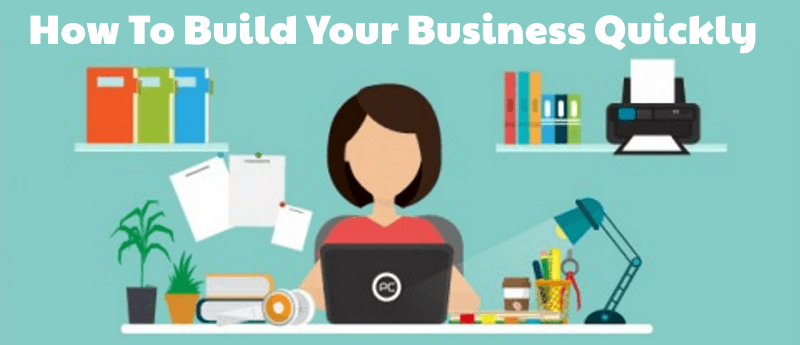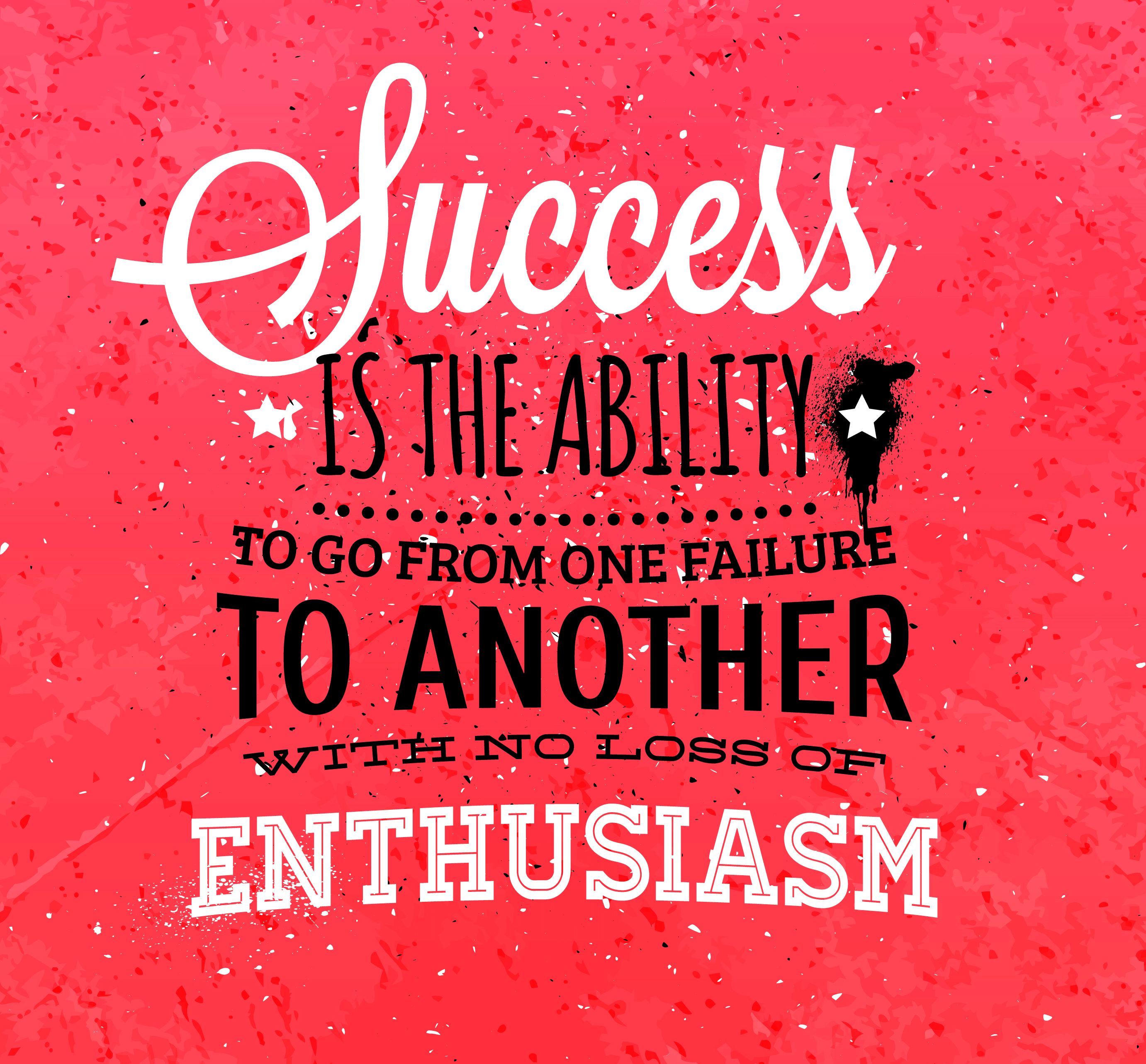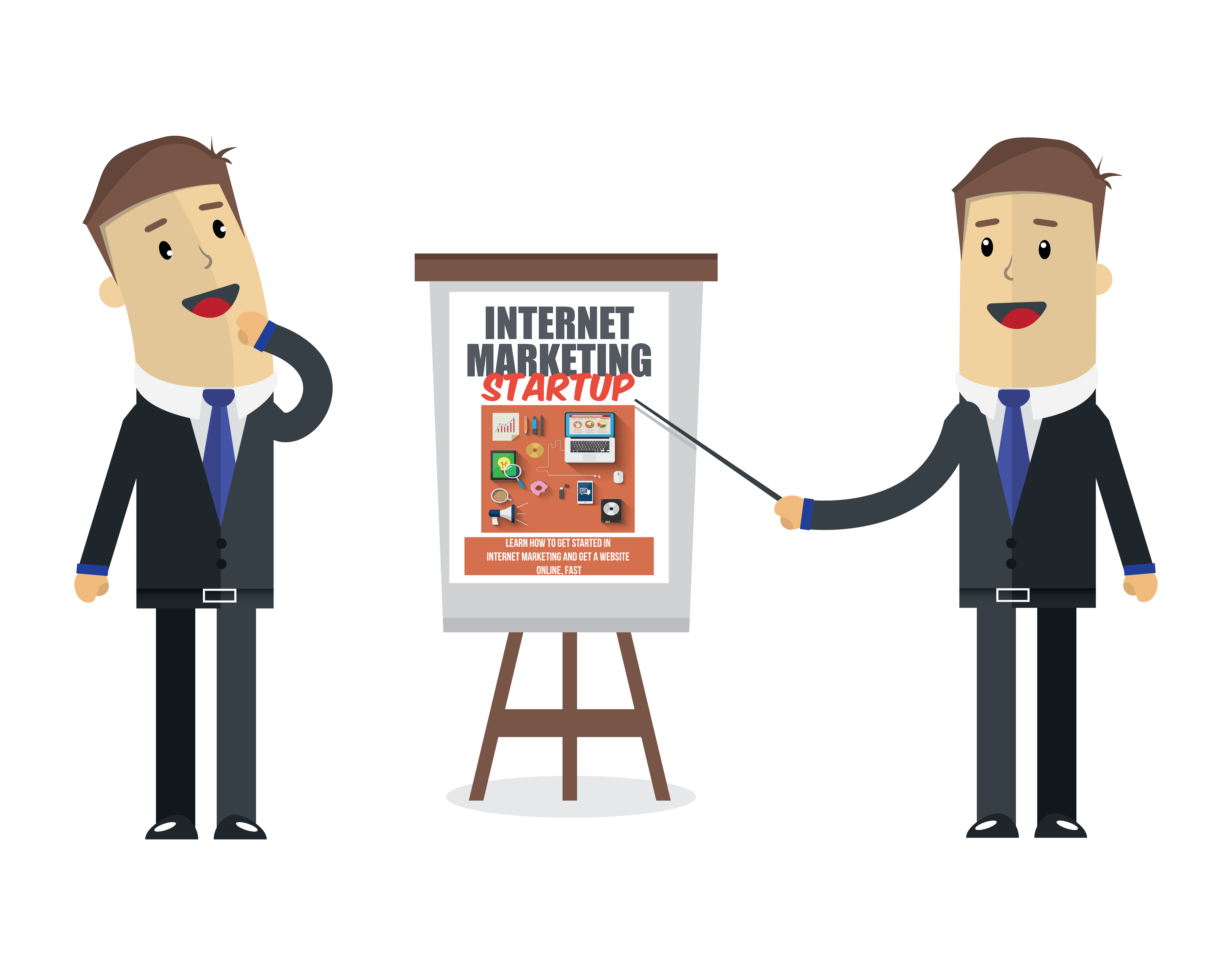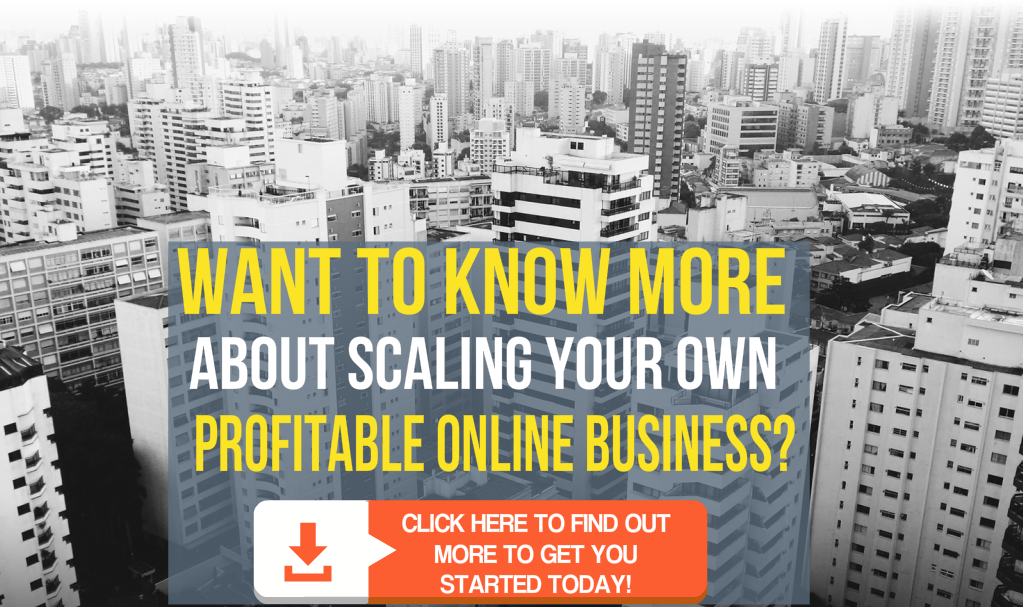infopreneur
Affiliate Marketing Myths (The Top 5 Affiliate Marketing Myths)
Affiliate Marketing Myths (The Top 5 Affiliate Marketing Myths)

Bad information keeps many people from making money online.
People give a half-hearted effort to one form of marketing, get disappointed that it didn’t work, and then cry out to the world that it no longer works…
“Email Marketing Is Dead!”
“SEO No Longer Works Thanks to Google…”
“Content Marketing Has Lost Its Luster…”
Or the big one:
“Affiliate Marketing Is for Scammers!”
When something is proclaimed dead or not working any longer, it’s probably because someone was gaming the system and the system owners plugged the hole.
Ethical marketing always works in the long run.
That’s why Affiliate Marketing has worked for decades and will continue to work for the non-scammers of the world.
But the headlines persist, and the myths and misconceptions flourish. Let’s take a look at affiliate marketing myths (the top 5 affiliate marketing myths) and reveal the truth about them!
Shall we begin…?
1) Affiliate Marketing Is Easy…

There’s a misconception out there that the newbie online marketer can grab an affiliate link, put it on their Facebook page, and the money will start rolling in.
Not so fast…
Affiliate marketing like any other business model IS a business.
And it should be treated like a business.
While affiliate marketing may be the exact business model you need as a new entrepreneur, it’s important to understand and accept that it is NOT a get-rich-quick scheme.
Is this beginning to sound like work yet? It should.
Affiliate marketing can be VERY rewarding, but it is not easy, especially if you have no business experience. But affiliate marketing can be best way to learn how to build a business with very low-risk.
Your investment as an affiliate marketer is low because you don’t have any product or delivery costs. Your focus must be on building a market, knowing that market inside out, and learning how to sell.
These are essential skills for any business owner to master.
Driving traffic and measuring conversions to build your marketing list is the primary tool of every affiliate marketer.
2) Affiliate Marketing Doesn’t Work Any More…

The days of throwing a link up on the social marketing sites and making a million dollars over night are gone…if they ever existed.
Social media has heightened the importance of building relationships with your target market, and that can be a slow process.
Your followers and email subscribers must feel a connection with you. If they don’t, they find someone else where that connection is real.
Affiliate marketing not only works with an audience that knows, likes and trusts you, but they will ask for your affiliate link for new products. Sometimes, they feel such a close relationship that they’ll pass around your affiliate link for you.
Affiliate marketing without real relationships (even if they’re automated) is hard but can be done with a lot of effort.
But affiliate marketing with real connections with an audience that has been nurtured and embraced works like a charm because you’re genuinely looking out for their interests.
3) The Competition Is Too Steep In Affiliate Marketing…

First, let’s agree competition is good.
That means there’s a market for the product. If not, no one else would be trying to sell that product.
Competitors can also become your best traffic source. Using the right tools like iSpionage.com, you can target your competitors, and step in front of their traffic with better offers, Facebook ads, or other techniques.
Sound a little cutthroat?
Nope, it’s just business. Once you become the Big Dog, everyone will target you too.
Your job is to offer better bonuses, better services, better support, and better experience to that market. And by doing that, you’re building a better relationship.
Find out how your competitors are building their audience (keyword research) and jump in there to grab that audience yourself.
Business is about competition, so if that bothers you, you probably need to get a job.
4) The More I Promote My Affiliate Links The More Money I’ll Make…

Listen, this one is tricky.
In theory, this is true. But there are other considerations like…
Does your message match the right audience? This is where you’ve got to get good at know your market including their hopes, dreams and issues.
In the consulting world, they call these the FUDs – Fears, Uncertainties and Doubts.
What is your audience trying to do? And how can the solution you put in front of them solve that issue?
Promote to the right audience and you don’t have to “sell them” often because you become part of their go-to-problem-solver while you’re building a relationship.
5) Affiliate Marketing Is High Risk And Low ROI…

Ok. There is risk in any business endeavor. In affiliate marketing, you could make a lot of sales for a product only to have the product owner go out of business.
That’s always a risk.
And the return on investment could be very low, but only because you’re not making sales.
That usually means you don’t have the right message for the right target market. Conversions are much easier and ROI much higher when you convert prospects to customers.
Opponents of affiliate marketing will jump in here and declare you’d be better off building your own products, selling them online and keeping ALL the money.
Here’s the truth about that:
Affiliate marketing is awesome because the risk is extremely low. You don’t have to create a massive infrastructure to support your products. You’re letting someone else take that risk on.
And the low ROI? Wrong.
The potential in affiliate marketing for those people who learn how to build an audience and convert that audience to paying customers is HUGE because it’s a pay-for-performance model!
The more you convert, the more you make and the higher your return.
Of course, like everything else, affiliate marketing only works if you know how to do it correctly.
To keep you on track, it is a great idea to use checklists and if that sounds like a good idea to you then please look at these checklists here: warr.us/NAMSAffChecklists
How To Build Your Business Quickly
How To Build Your Business Quickly

So, you want to know the quickest way to build and grow your business quickly! Well the answer is actually pretty simple and common sense if you think about it!
Drumroll please!
The quickest way to build your business is:
Cloning!
No, not cloning sheep or mice, but cloning yourself through outsourcing.
Hiring other people to do various tasks in your business will grow the business like nothing else.
Most people think of outsourcing as an expense that eats away at the bottom line. They avoid jumping on outsourcing because they see it as an expensive luxury instead of a unique way to solve problems and grow fast.
Make no mistake: Outsourcing is no luxury!
It is the KEY to transforming what you do from a J.O.B. to a viable, scalable business. Systematizing your business so that other people can do the work without you being involved in the details does two things for you:
- Systems help you create business assets that can be sold because the business doesn’t rely solely on you!
- It frees up your time so that you can enjoy more of life…
And that’s why you’re in business, isn’t it, enjoying life?
Unfortunately, most small business owners never experience the power of outsourcing. They never experience a team that’s fully invested in the business’s success and they don’t build the business with systems in mind.
Outsourcing comes with benefits…
Your goal as a business owner is to earn more and work less I hope. Scaling your business with outsourcing leads to:
- More time
- More money
- Getting more done
But you have to do it right. If you continue to run your business as a solopreneur doing everything yourself, eventually you’ll discover that you’ve created a really difficult job and work for a really bad boss.
The alternative is creating a scalable and sustainable business which means you must do the things that bring the best financial return. Those things are important.

When you start paying attention to all of your Urgent vs Important tasks, you soon discover that the Important tasks are usually the ones left undone.
Urgent always wins…
Unless you put a plan with a team in place to minimize the urgent tasks, and handle them when they do come up, it’s nearly impossible to focus on the important…
Let’s be clear on what Urgent AND Important means…
This is an emergency.
That kills a staff’s morale.
When you build systems and put people in charge of those systems, they become accountable. And they work to ensure less urgent activities. Your freedom and success live in the Important But NOT Urgent quadrant. So should you.
Unless you have systems, and people working those systems, most of your activities are the same that you’ve done many times before needlessly. Our businesses are full of processes and tasks that create revenue and expenses. The goal is to control the expenses and create more revenue.
Scaling your business is the best way to grow your revenue. Making more money requires leverage – cloning yourself. Unless you start leveraging other people, your business will stay small and revenues more than likely will be thin.
When you start scaling and expanding, you’ll find outsourcing makes that happen.
How do you get started outsourcing?

The FIRST thing you need to do is find a profitable niche because if your niche isn’t profitable you are wasting your time!
If you want to know more about discovering hot, profitable niches, take a look here: https://warr.us/NAMSNiches👌.
To get started with outsourcing/scaling you need to discover how to…
- Start small
- Identify repetitive tasks
- Find good help
Example: Start Small
Find a task that needs to be done but is not urgent or important to your business. (This is something that can’t hurt your business if it’s messed up.)
For example, imagine that you have a PDF document with 200 resource links that you’d like to transfer to a spreadsheet. That’s a perfect task for outsourcing.
You’re looking for someone that you can build a long-term relationship with, so you want to see how they handle the project.
- Do they turn it around before the deadline?
- Do they require a lot of hand-holding from you?
- Do they find a better way to do the task?
- Is their price reasonable?
- Is the communication top notch?
If that experience was positive, try them on something else.
Example: Repetitive Tasks
Look at your calendar. Is there something you have to do each month, week, or day that can’t be done by automation (computer), but is done the same way every time?
Here are some examples:
- Product download
- Indexing your forum
- Managing Facebook group memberships
- Bookkeeping
- Transcription of your monthly call
- Support desk responses
And more.
Create a process document, or make a video of the task activities. You’re beginning to build a business operations manual. And that’s one of the keys to building a real business asset that adds value.
Example: Find Good People
What is more important to you? Cost, Quality or Speed? As the saying goes, you can have two of those. Never all three.
When you’re looking for good help, make sure you understand:
- Does this require outstanding quality?
- Does it have to be done fast?
- Can you pay top dollar?
Compromise and can still get what you need for the price you need it when you need it. But you must understand your need. Finding outsourcing resources can be tough, especially good ones. Word of mouth is the best source to find good people, but satisfied business owners seldom share their best resources. But you can ask. And you can ask them to make a referral.
If you can’t get a good referral, go to a site like UpWork.com and look for people with high ratings and skill sets that you need. Pay close attention to the reviews. The people you recruit will be an important part of your profit center.
Remember, every task or process outsourced should be creating more revenue for you. Think of outsourcing as a profit center, not an expense. If you’re doing it right, you should be creating more revenue with every process you outsource.
The Secret To Making Money Online
The Secret To Making Money Online

If someone were to ask you what the #1 ‘secret’ to making money online was, what would you say?
Any guesses? I’m sure that you can think of many answers to this question, I know I can!
Maybe you’d start by saying it’s to find a starving crowd. Or perhaps the best way is to build and nurture a list. Or to get in on the beginning of a hot new trend.
All of these are good answers.
And all of these are wrong. That’s a rather sweeping statement I know, but please bear with me for a minute!
THE big secret to making money online is one that crosses all niches, applies to all markets and marketers, and works just about every single time to make REAL money.
It’s how six and seven figure incomes are almost always earned and it’s also how YOU can begin earning 6 figures in the next 12 months.
Now then – before I reveal this ‘secret,’ let me warn you that you might have heard it before; in fact I can virtually guarantee it.
In fact, some online marketers have to hear this a dozen times or more before it really starts to sink in and that’s because the most powerful techniques often masquerade as something a bit boring. Or tedious. Or uninteresting; after all, taking a wheelbarrow full of cash to the bank is exciting but earning it is often something altogether different. And people also hear it so often that it becomes rather blase and it doesn’t get taken seriously which is a BIG mistake!
OK are you ready for the big reveal?
Here’s the ‘secret…’
Yup. That’s it. Pretty simple, I know.
Yet 98% of marketers will never do it. And 97% of marketers will stay broke because of it.
Let’s say you spend time making the perfect product for a super hungry niche. You tweak the offer to get it converting sky high. You bring on affiliates to help you promote. Everything is in place. You launch, you have an extremely profitable week…
…and then what?
For most marketers, they will turn their attention to creating the next product and doing the entire process again. And because of that, they will leave a tremendous amount of money on the table.
If your offer sells for $19 and you’re converting at 5%, then you’re making $95 for every 100 people you send to your site. This doesn’t even include the list you’re building and will market to over and over again.
Now then, if you can buy those 100 visitors for $40, you’ve just make a profit of $55.
Buy 1,000 visitors and you’ve made $550.
Buy 10,000 visitors and you’ve made $5,500.
But wait, there’s more!
What if you add a backend product? Just one sale per 100 visitors of a $100 product increases your profit from $55 to $155.
10,000 visitors? $15,500 profit.
You can also add coaching, continuity (membership) programs, etc. for even more profit.
Are you following me here?
Let’s use an analogy: Someone invests 3 months to open a hair salon. They have a big grand opening with lots of customers. And when that dies down, they close shop, move across town and do it all over again.
Yeah, that would be pretty crazy. Yet that’s what 98% of online marketers do; they create a product, launch it, have a great week and then start all over again, and they wonder why they are still struggling.
So what’s the takeaway?
- Invest time in building a profitable, high-converting funnel.
- Test it out and do the math – how much can you spend on advertising and still make money?
- Start by investing small and ramp your way up.
- Don’t forget to build your list – your funnel is your upfront money, and your list is your “go to” money. That is, whenever you need funds or simply want to boost your income, you can go to your list and make them an offer.
What will derail you in this process:
- Getting lured away by the glamour of creating another new product funnel when you should be scaling up the one you already have.
- Fear of spending money to make money. Yes, spending $1000 or more to make sales is scary. That’s why you want to start small, make sure your entire funnel is working, and then scale up. And up. And Up.
Your biggest mistake – would be brushing this advice off. Don’t be that person who thinks, “Yeah, yeah, heard it all before!” You may have heard this information/advice before but have you actually implemented it?!?
Fortunes have been made simply by creating a profitable funnel and then scaling it up.
FORTUNES.
As in nearly 7 figures made from one Clickbank product…
Per MONTH.
That’s right – 6 Pack Abs at the pinnacle of its success was earning over $11 million per year. So, it works plain and simple!
Now, your results will vary; there is never any guarantee but isn’t it nice to have this information and now you (hopefully) understand the power of it, you can actually take action on it!
7 Essential Strategies For Increasing Conversions
7 Essential Strategies For Increasing Conversions

Increasing Conversions Through Engagement

If you want to maximize sales, you need to focus on one primary component of your entire sales funnel and that is in improving visitor engagement!
So, why is visitor engagement so important?
Think of it this way; visitor engagement is probably the strongest indicator as to how a potential customer feels about you, your product or brand.
The more you engage with your visitors, the easier it will be to build brand loyalty and make your vistors feel valued.
And when you manage to do that, these vistors will turn into paying customers who will buy all your products and devote more time and money to you! They’ll decide to choose you over the competition, and they’ll buy from you again and again.
Here are just a few powerful strategies that you should be using to increase engagement on your website:
Combine Action with Rewards

Rewards and incentives such as giveaways, coupons, and bonus products add extra value to a customer’s purchase which will positively impact visitor engagement.
One easy way to set up a reward-style program is to use something like Perkzilla (warr.us/PerkZilla)
PerkZilla is a smart way of grabbing attention, engaging visitors and boosting clicks and sales just by rewarding customers who take action.
Offer Time-Sensitive Coupons & Discounts

You can also offer special discounts and time-sensitive coupon codes in order to combine the use of urgency with making people feel special. This can be a powerful motivator as many people suffer from FOMO (fear of missing out) so by adding a sense of urgency, you are tapping into that fear.
Offer Early Bird Discounts

Reward those who purchase in the early stages of your product launch with the lower pricing or added bonuses.
Tip: You can do both of these tasks easily with a great tool called Conversion Gorilla (warr.us/ConversionGorilla)
Create a NO-RISK Low Cost Front-End Offer

A low cost, front-end offer is the easiest way to engage visitors and transform them into customers because you’re giving them an opportunity to test out your product and get to know your brand without a lot of upfront cost or investment.
In other words, there is no risk to them for simply giving your company a try.
Personalize Your Outreach

Build stronger relationships with your audience by creating marketing campaigns based on location, traffic sources or social media platforms. This used to be virtually impossible
but increasingly clever technology is making these things achievable.
People love receiving personalized offers or being addressed by name or location. It will help you stand out!
Add Visual Magnets To Your Sales Process

Consider integrating infographics or videos into your content so it stands out. Anything you can do to be different that will capture attention quickly is important.
These are just a few ways to improve your customers on-site experience. Can you think of a few more? By doing this you can engage your prospects and hopefully turn them into buyers.
Carry this practice over into you sales pages and you will see an increase in your conversion rate, guaranteed. And talking of sales pages, let’s have a quick look at them whilst we are here 🙂
By the way, if you want to learn more conversion boosting tips, grab my free report here.
How To Test Your Sales Page For Maximum Conversions

Split testing is a way of gauging the effectiveness of specific elements on a sales page or within a sales funnel to improve conversion rates. The idea is that you test ONE element at a time, and run a split testing campaign long enough for both pages to generate an equal number of visitors (or “hits”).
You need to get into the habit of split testing your sales pages so that you have a clear idea as to what’s working and what needs tweaking.
Just a simple change can significantly increase conversion rates but without testing your copy so that you can determine areas that need strengthening, you won’t know what that change should be and this could be the difference between a profitable campaign and a failure; it is that important!
You can literally split test every aspect of your webpage from headlines, pricing, graphics, buttons, layout, color schemes, and more. And you don’t have to just split your sales pages either. You can also split test your email messages, auto-responder follow-ups, and even your blog! If it can be created, it can be tested 🙂
By split testing your pages you will quickly see just what draws your visitors in and what simply pushes them out to the next website. By analyzing this information, you can make little (or big) changes that will boost conversion and send your profits through the roof!
The easiest way to split test your pages is to sign up with a great tool such as Split Test Monkey (warr.us/SplitTestMonkey), which is a powerful tool that takes the grunt-work out of split testing.
Split Test Monkey works for everyone. If you’re trying to grow an email list you’ll be able to use Split Test Monkey to boost your subscriber rates and grow your list faster by testing your landing pages, from the lead magnets to the color of your sign-up buttons.
Here’s an example of a basic split testing campaign:
You create two WebPages, with two different headlines.
You call them SalesPage-1.html and SalesPage-2.html
You then direct people to both pages equally, so that both pages are receiving the same number of hits. You let it do its job for a reasonable amount of time (usually 7-10 days) or until each page has received a specific number of visitors (2000, 4000, etc).
The objective is to have a clear snapshot of which page is preforming best based on conversion rates.
Once you’ve established which page is out-performing the other, you change another element of the “winning” page and comparatively test it against a different component (another area of your sales page, such as your bullet points, opt-in box, placement of graphics, etc).
And here is why split testing is so incredibly important to your business (in case you are still unsure!):
Let’s say that your sales letter is currently converting only one sale out of every 100 visitors you receive.
Let’s pretend that you are selling a low-end product for $20.00.
If only one visitor out of 100 purchases your product, your conversion rate would be 1%.
Now, let’s say you start split testing your sales pages. Perhaps you change the headline so it’s more catchy and instantly your conversion rate increases by .25%.
Now you are generating 5 sales a day for every 400 visitors to your site. You would end up earning $100.00 per day instead of $80.00.
You continue to split test your pages, this time changing the graphics so they load faster and aren’t so cluttered on the page, or you shift your copy so that the first paragraph is directly above the fold.
This increases your conversion rate yet again, this time by .75%.
With just a few small changes you have boosted your conversion rate up by 1% and you are able to turn two visitors out of every 100 into a sale.
Your earnings would have literally doubled!
Sometimes even the smallest, minor changes within a split testing campaign can cause a tremendous boost in revenue, and all with very little work involved! Just don’t forget to test only ONE element at a time, or you won’t know which element is giving you the biggest conversion boost.
That’s it for this post; I hope you found it useful. Now go and create some engaging content for your visitors and sales pages (and don’t forget to test, test, test)!
11 Things You Should Know About Internet Marketing
11 Things You Should Know About Internet Marketing
Using the internet to promote goods and services for your business is generally known as internet marketing or online marketing. This process may also be referred to as electronic marketing, e-marketing and e-commerce.
Internet marketers use a wide variety of strategies to make their business visible to their target audience, or niche. These strategies include SEO (search engine optimization), blogging, direct marketing, email marketing, content marketing, social media marketing and the list goes on.
There are many advantages and disadvantages that come with internet marketing as a business model and we are going to be looking at a few in this article.
Advantages

There are many advantages that come with having an online internet marketing business and these include cost, reach, technology, 24/7 availability of products/services. These are primarily customer advantages, but the business benefits include reliable data collection, quick competitive analysis and personalisation.
1. Cost

Compared to traditional brick and mortar or offline marketing, it is much cheaper to promote your business online using the internet and this is especially true about advertising. In fact, there are many ways to promote your business online for FREE! Unlike traditional ad media such as the TV and newspapers, your online ad spend will be a fraction of what it costs to promote a business traditionally. As well as being cost-effective, internet marketing is also time-saving because it takes less time to find prospects, turn them into buyers (hopefully) and complete their transactions.
As there are little to no overhead costs, the returns on investment (ROI) that comes with online marketing far exceed that of traditional marketing. If you have a good target market and laser focused marketing strategy, you will get higher and (sometimes) instant returns on the money you spend when placing online ads. And don’t forget that many of these techniques are completely free and will still yield good returns.
Staffing costs will also be lower when compared to a more traditional offline business. Hiring costs for virtual assistants is far less than on the high street and you can outsource all over the world!
Cash flow is also often improved. As consumers pay for the product before it is dispatched, this helps to improve the cash flow for the company, making sure that the business can pay any suppliers and other costs (such as online marketing tools) on time.
2. Reach

There’s also the advantage of being able to get in front of a global audience with your online business (unlike a traditional business that is normally restricted within a specific boundary of operation). This opens up so many new opportunities and even allows you to compete on a global scale, even with the big guys! If you already have a traditional business, it is a good idea to move some of your operations online, so that even if your offline office is closed for business, customers and prospects will still be able to visit your website and place their orders.
3. Technology

The amazing technology that powers the web, and also your online business is one of the major benefits of hosting your business online. And the technologies are only going to get better and more sophisticated as time goes by. With reliable auto-responder services, you don’t have to worry about your emails being delivered (email marketing) to your target audience in a timely manner; delivery is almost instant! And you can even schedule emails to go out on a daily/weekly basis on autopilot! On the other hand, the traditional direct mailing system can take days, or even weeks to deliver mail to their destinations, especially when you are mailing globally.
4. Availability

There is no time restriction on when a consumer can shop online because the internet is always available. Many online sales now start at midnight on a particular day encouraging customers to shop all hours of the day. For example, many retailers will start post-Christmas sales on the 26th of December at 00.00, but many consumers are starting to shop even on Christmas Day itself!
5. Data collection

Every time a customer interacts with your business, that interaction is captured. The business can then use this data in a number of ways. To start with, information can be analysed to find out which are the most popular products/services being sold. Secondly the data can be used to assist in segmenting their customers, profiling them and sending customers promotional material based on past buying habits. This can even go a step further with potential customers, as you can now retarget them with ads based upon their browsing history, so they see relevant, targeted ads tempting them back to buy.
There has been much controversy over the amount of information that is being collected online by various companies. This is of particular importance when it comes to social networking sites and there has been many a debate as to whether customers should be able to opt out of that information being shared to third party users.
6. Competitive analysis

Any business owner knows that it is important to analyse your competitors. The internet allows businesses to analyse their competitors’ online strategy quickly and easily. You can keep an eye on what new products they are releasing, react to any price changes, or use the internet to discover all sorts of secondary data on your competition. The internet allows you to react quickly to any change in a competitor’s strategy, and enables you to try to provide a service that at least matches, but preferably beat your competitors. Just keep in mind that they can do this too!
Browsing competitor websites can also provide a wealth of background information about the business such as:
- Accounts and trading activity
- Company objectives, culture and ethos
- The size of the company
- Where they are located physically (if appropriate), number and type of sites that the business operates from
The internet often has information about your competitors (and you) which is prepared by independent organisations which are not connected to competitors so the data should be reliable.
7. Personalisation

When customers log into their accounts, a business can make their web experience almost unique. Using a membership portal which requires them to login is definitely a preferred option here as there are so many benefits, from offering special offers to that particular customer, offering an add-on to their recent purchase, (much like Amazon does), or by allowing the customer to personalise their own products, like Nike does with their trainers. Personalisation allows the business to form stronger bonds online with customers who they don’t have any physical interaction with, and this helps to form long term online relationships thus ensuring customers come back regularly.
Disadvantages

Not everything is rosy! There are always going to be some disadvantages to any type of business and internet/online marketing is no different. Some of these include loneliness, motivation, no face-to-face contact, and once again technology!
1. Loneliness

Do not underestimate this! Many people dream about working from home and living the “laptop lifestyle” but it can be pretty lonely working on your own, especially in the beginning when you may see little reward for your efforts. Try to involve those closest to you such as a spouse, family and friends.
2. Motivation

This is intrinsically linked to point 1. If you are lonely, not seeing much reward for your efforts, and have negative people surrounding you (we all do), it can be very difficult to stay motivated. This is a trial which pretty much ALL online entrepreneurs MUST overcome to become successful, but this is a very real danger and can have a serious impact on your relationships, but you need to hang in there because the rewards are well worth it!
3. Face-to-face contact with customers

This is a real downside to online marketing; the lack of a tangible physical connection. Limited face to face contact really is one of the major drawbacks of internet marketing because nothing beats having a potential customer in front of you. Businesses that are solely based online aren’t usually able to build strong personal rapport with their customers. As a result, there is the possibility that they may lose some of their customers to more traditional competitors who use strong customer service tactics. But the good thing is that more and more people are turning their buying power online for the convenience it provides so all is not lost!
4. Technology(!)

Ah, so you have probably noticed that this can be an advantage AND a disadvantage! The virtual nature of internet marketing increases marketing complexity. When you are just starting out it can quickly become confusing when trying to choose which online marketing techniques will become profitable.
Customers also face complexities in the aspects of shopping online and may have security concerns leading the un-informed consumers to stick to conventional buying rather than enduring such online purchase complexities.
And there are such a myriad of tools to accomplish a particular task that it can quickly become overwhelming. Just look at the number of auto-responder services, domain name providers, hosting providers, page builders and it can quickly lead to despair. In fact, this is probably the number one reason why many budding entrepreneurs give up before they even really get started which is a real shame.
Don’t be one of those people; if you want to learn more about the technical basics of having an online business, I have a fantastic free report that you can download here.
So, there you have it. 11 things you should know about internet marketing broken into the advantages and potential disadvantages of internet marketing and running an online business. I’m sure you will agree that the advantages definitely outweigh any potential pitfalls. So, what are you waiting for? Go out there and claim your slice of the online pie, and if you want to remove the confusion around the technical aspect of running an online business, then download the Internet Marketing Startup Report now.









